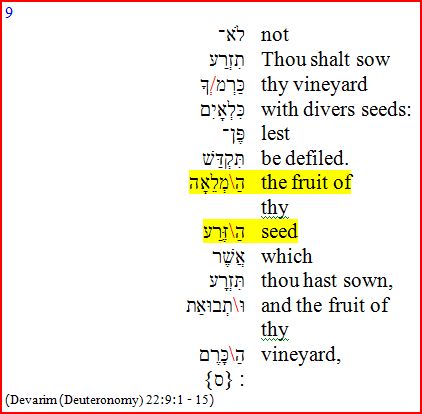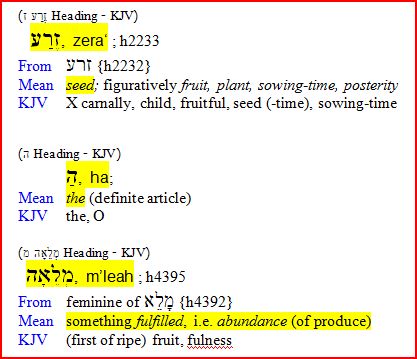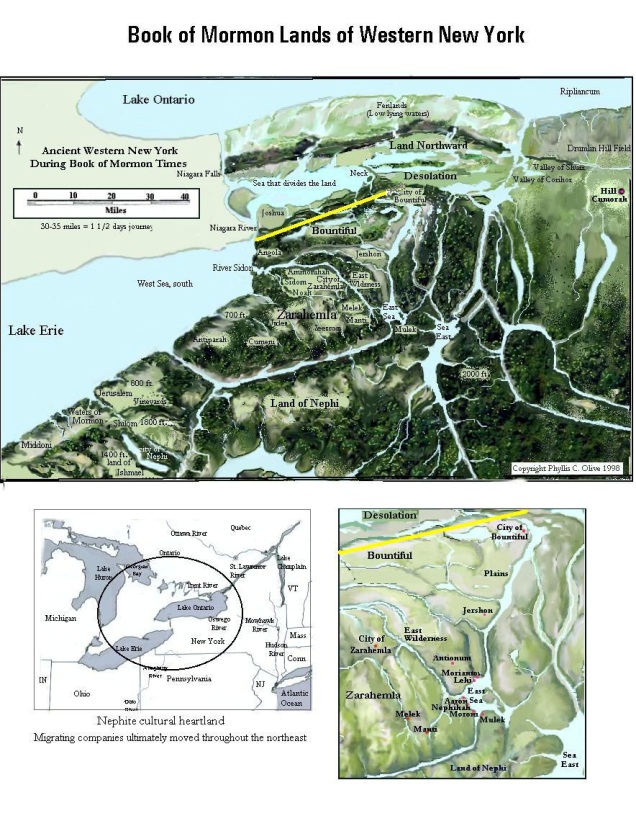|
“Zarahemla” and a verse from Torah
Does the name “Zarahemla” relate to an expression from the book of Devarim (Deuteronomy)?
In LDS SCRIPTURE with
Official Study Aids (Advanced), we find the following interlinear Hebrew and King
James Bible (KJV) translation of
Deuteronomy 22:9:

|
The Bible Dictionary informs us that:

The King James Bible translation of “ הַ\זֶּרַע
הַ\מְלֵאָה”, pronounced “ha-m’leah
ha-zera”, reads “the fruit of thy seed”. Unfortunately, the KJV doesn’t give
us a completely accurate translation of the Hebrew expression. The part
“הַ\זֶּרַע”,
pronounced “ha-zera”, literally means “the seed”. “זֶּרַע”,
“zera”, means “seed”. The part “הַ\מְלֵאָה”,
“ha-m’leah”, literally means “the fullness”
(e.g. Bemidbar (Numbers) 18:27)
or “the abundance”. “Zera-ha-m’leah” therefore means “Seed of the fullness”
or “The seed of abundance” – a name perhaps connoting a blessing of
prosperity upon faithful posterity in an abundant land.
(Omni 1:13-14)
In
pre-exilic Hebrew-Phoenician letters (the kind that Lehi
and Yirme'Yahu (Jeremiah) could read – the kind of letters inscribed on
the
Bat Creek, Tennessee mound tablet) the Hebrew expression “ זֶּרַעהַמְלֵאָה”,
“Zera-ha-m’leah” is written:

The name
"Zarahemla"
is rich in Hebraic possibilities. Take for instance “zar’hemlah” (זָרחֱמְלָה)
which means “stranger (foreigner)” of “mercy (compassion)” which aptly
describes how Zarahemla and his people received the Nephites.
(Omni 1:14-19;
BROWN-DRIVER-BRIGGS-GESENIUS Hebrew-Aramaic Lexicon,
2114, pg. 266, e.g.
Leviticus 22:10,
Isaiah 1:7 + 2552, pg. 328, e.g.
Genesis 19:16)

Sister Phyllis Olive's Map of Principal Book of Mormon Lands -
The
Near Cumorah Setting, with the Desolation - Bountiful line (northward from Zarahemla)
highlighted
(Alma 22:32)
Regarding Olive's map, please see
Why Lake Erie, and not Lake Tonawanda, is the Western Terminus of the
Land Bountiful
Vincent Coon
וִינְסֶנט כּוּן
© Copyright 2014
|
|
|
|
|